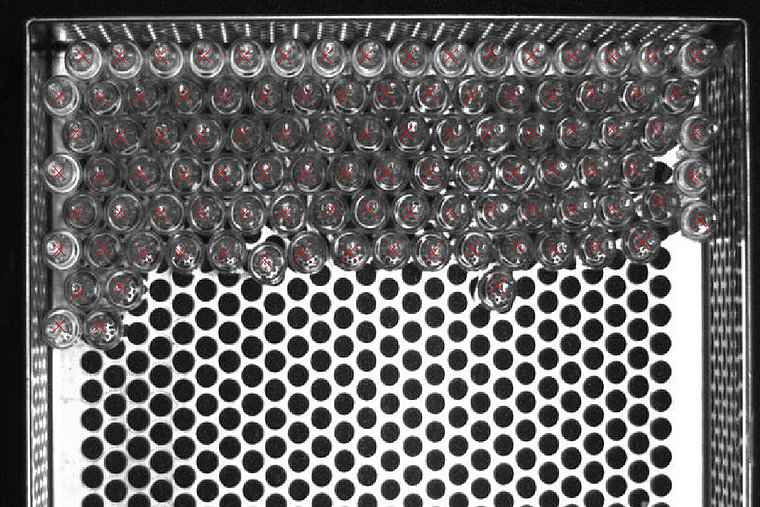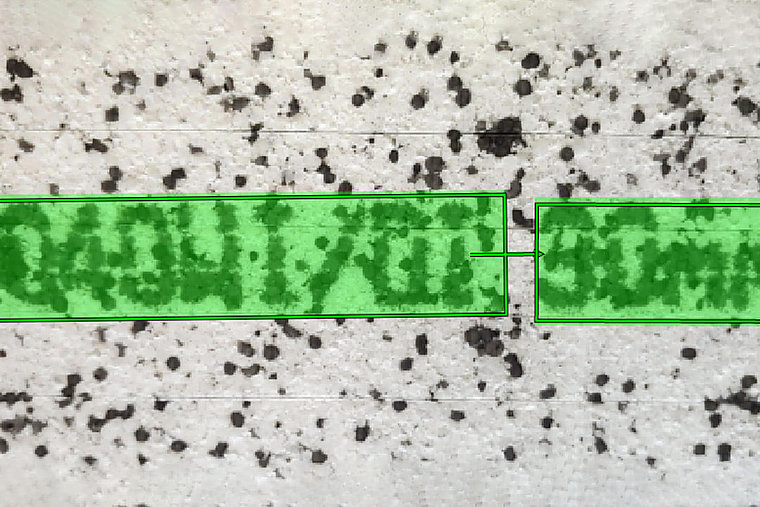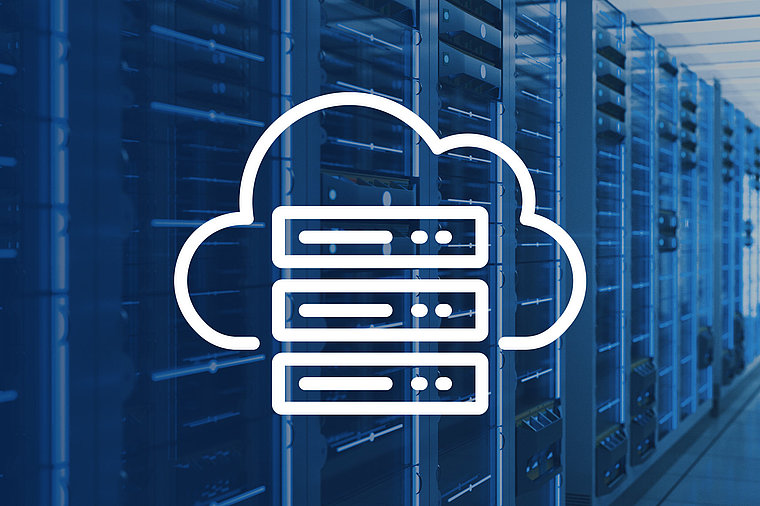
HALCON Steady
HALCON Steady stands for high compatibility and is your edition of choice if you require long-term support. It receives a new release every two years and is available as standard purchase. It provides a balanced feature set and profit from field-proven and mature technologies.
Latest core features
Out-of-Distribution Detection (OOD) for Classification

This HALCON feature makes it easy to recognize unexpected behavior caused by incorrect classifications in production. Thus, users can take appropriate measures, such as stopping the machine, in a targeted and efficient manner. When using a deep learning classifier, unknown objects are assigned to one of the classes that the system has learned. This can lead to problems if, for example, the defects or objects themselves are of a type that has never occurred before. The feature “Out-of-Distribution Detection (OOD)” indicates when an object is classified that was not included in the training data.
For example, this could be a bottle with a green label if the system was only trained on bottles with red or yellow labels. In such cases, HALCON provides the message “Out-of-Distribution” together with an OOD score that indicates how much the deviation from the trained classes is. The OOD score can also be useful when expanding deep learning models with new training images by indicating which of the new images will have the greatest value for the new model. For example, a high OOD score for a new training image indicates a greater deviation from the images already in the network – this means a higher information content and, therefore, greater value for the training.
User-friendly shape-based matching

This technology is used to find objects fast, accurately, and precisely.
It includes the patent pending "Extended Parameter Estimation" for this purpose. This allows parameters to be estimated with greater granularity, which significantly speeds up execution in some applications. “Extended Parameter Estimation” enables this estimation also for users without in-depth machine vision expertise.
Optimized QR code reader

The performance of HALCON's QR code reader is very high. This is particularly evident under difficult conditions, for example, when many codes need to be found in the image area or many textures in the image complicate the detection.
The recognition rate has been increased, and the evaluation time has been significantly reduced in demanding scenarios.
Deep 3D Matching

With this feature, HALCON contains a deep-learning-based market innovation for the 3D vision sector, especially for bin-picking and pick-and-place applications. This feature is particularly robust in determining the exact position and rotation of a trained object and is characterized by very low parameterization effort and fast execution time. Depending on the accuracy requirements, one or more cost-efficient standard 2D cameras can be used to determine the position. Training is performed exclusively on synthetic data generated from a CAD model. Further training is therefore not required.
Customers can already run this feature in HALCON 24.11 – to train the model and evaluate applications, they can contact MVTec at any time. Training and evaluation within HALCON will follow in the next release.
Deep Counting

Deep Counting can be used to count numerous objects quickly and robustly, as well as to detect their position. The deep-learning-based technology offers significant advantages over existing machine vision methods: The feature can be deployed very quickly, since only very few objects need to be labeled and trained – both steps can be easily done within HALCON.
The technology provides reliable results even for objects of highly reflective and amorphous material. With Deep Counting, large numbers of objects such as glass bottles, tree trunks, or food can be counted.
Multi-Label Classification

HALCON provides multi-label classification, a deep learning method that allows the recognition of multiple different classes on a single image. Such classes can encompass various properties of the objects within the image, for example defect types, color, or structure.
In practice, this method can, for instance, reveal the presence of different types of defects in an image, allowing a more detailed classification. Compared to other methods, this deep learning method is faster in processing and the effort for labeling is also lower.
Structured light 3D reconstruction

In HALCON, the structured light model has been enhanced: besides deflectometry, it now also provides precise 3D reconstruction for diffuse surfaces in short cycle times. This enhancement gives users the flexibility to develop their own application-specific 3D reconstruction systems using a pattern projector and a 2D camera. The feature is particularly suitable for applications where precise spatial representations are required.
As a result, the technology is suitable for the optimization of manufacturing processes, quality control, and the precise measurement of various surfaces.
Training for Deep OCR – Detection

Deep OCR reads texts in a very robust way, even regardless of their orientation and font. For this purpose, the technology first detects the relevant text within the image and then reads it.
It’s also possible to fine-tune the text detection by retraining the pretrained network with application-specific images. This provides even more robust results and opens new application possibilities. For example: the detection of text with arbitrary printing type or unseen character types as well as an improved readability in noisy, low contrast environments.
Training for 3D Gripping Point Detection

3D Gripping Point Detection can be used to robustly detect surfaces on any object that is suitable for gripping with suction.
Users have the possibility to retrain the pretrained model with own application-specific image data. The grippable surfaces are thus recognized even more robustly. The necessary labeling is done easily and efficiently via the MVTec Deep Learning Tool.
MVTec License Server Cloud-Ready

Customers have an additional "cloud-ready" variant of the license server at their disposal. This makes it possible to license HALCON in the environments of commercial cloud providers as well as in enterprise-owned cloud setups without the need for a hardware dongle, solely through a network connection.
This means that HALCON can now be easily licensed across all cloud solutions. By using HALCON in the cloud, customers can easily benefit from the new possibilities offered by machine vision in the cloud.
